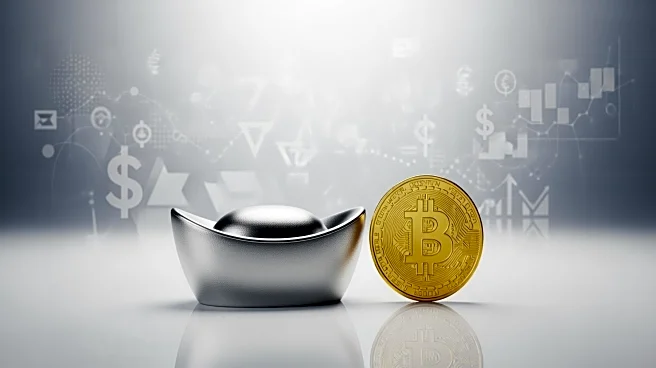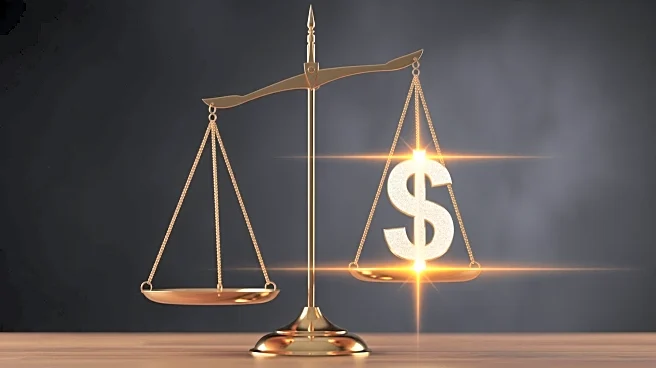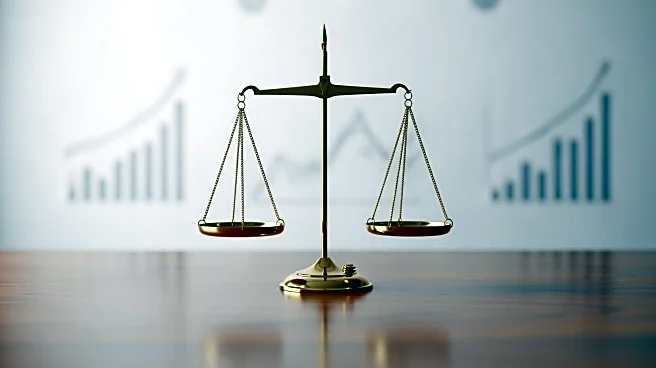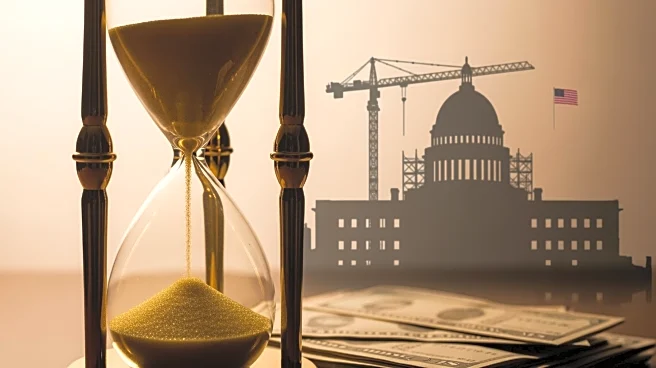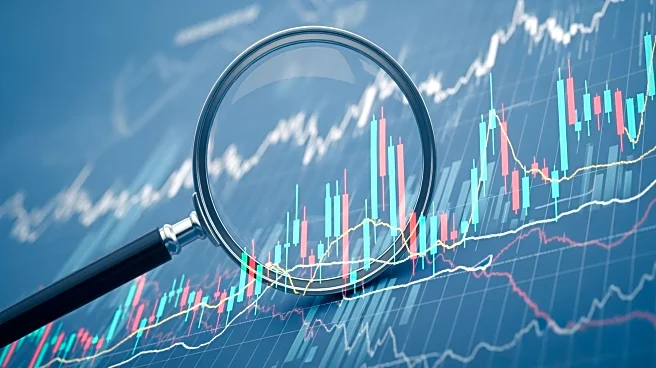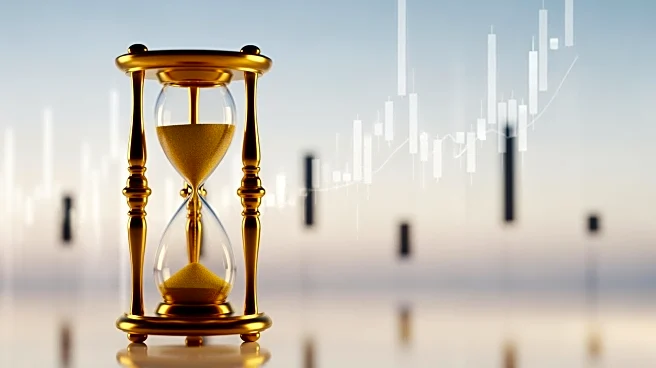What's Happening?
Gold and silver prices remained stable despite significant weakness in the U.S. dollar, which typically boosts precious metals due to their inverse relationship with the currency. The dollar's decline was triggered by the ADP employment report showing
October layoffs at 153,074, the highest since 2003, raising concerns about economic uncertainty. This data shifted market expectations, increasing the probability of a Federal Reserve rate cut in December from 62% to 70%. Despite the dollar index falling below the 100 level, gold and silver prices showed minimal volatility, suggesting other market forces may be offsetting typical currency dynamics.
Why It's Important?
The stability of gold and silver prices amid dollar weakness is significant as it indicates potential shifts in market dynamics. Typically, a weaker dollar supports dollar-denominated commodities like precious metals, but the current situation suggests investors may be reassessing valuations after recent gains. Since President Trump's re-election, gold and silver have surged significantly, outperforming major asset classes. This stability could reflect a consolidation phase, with investors evaluating whether current prices align with macroeconomic conditions or if further gains are possible.
What's Next?
The muted response of precious metals to dollar weakness may lead to a period of consolidation, with investors closely monitoring economic indicators and Federal Reserve policy decisions. The potential rate cut in December could further influence market dynamics, impacting precious metals and broader economic conditions. Stakeholders, including investors and policymakers, will likely continue to assess the implications of employment data and monetary policy on commodity prices and economic stability.
Beyond the Headlines
The disconnect between dollar weakness and precious metals prices may highlight broader economic uncertainties and shifts in investor sentiment. The stability of gold and silver could reflect cautious optimism or concerns about overvaluation, prompting a reassessment of investment strategies. This situation underscores the complex interplay between currency dynamics, economic indicators, and commodity markets, potentially influencing long-term investment and policy decisions.
